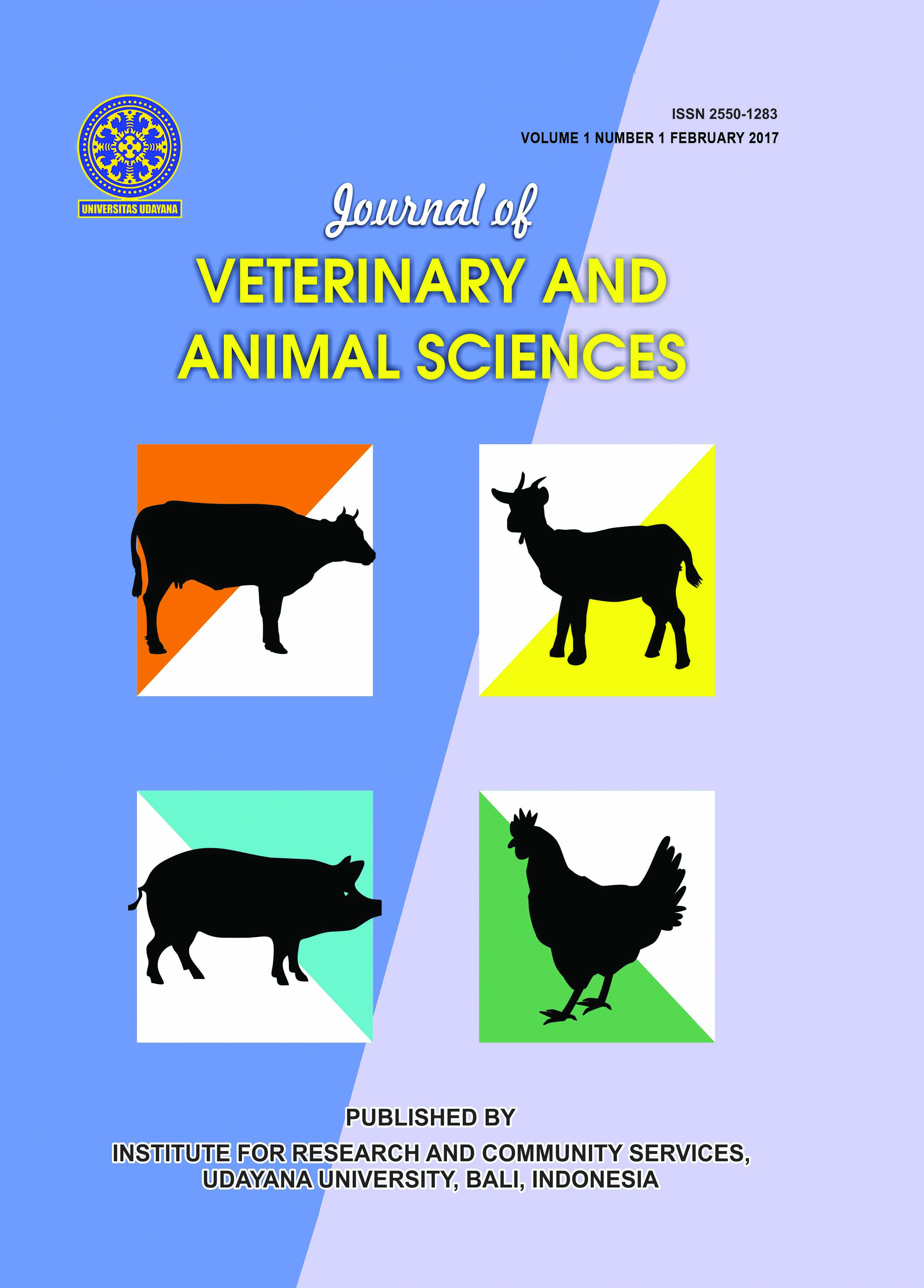Antimicrobial Susceptibility Patterns And DNA Plasmid Profiles Of Escherichia Coli O157:H7 Isolated From Feces Of Chicken
Abstract
Escherichia coli O157:H7 has been identified as one of the most devastating microorganism causing diseases in human. The infection by this bacteria causes a wide spectrum of clinical manifestations ranging from asymptomatic, diarrhea or bloody diarrhea, up to serious clinical conditions such as hemorrhagic colitis, and hemolytic uremic syndrome. Poultry is known as one of its reservoir besides cattle and pig. Moreover, the use of antibiotic in animal feed as growth promoters is common worldwide. Due to its potential threat to public health, sensitivity test against various antibiotics and studying the plasmid DNA profiles are necessary. The study was initiated by cultivation of isolates, followed by test of antimicrobial susceptibility against various antibiotics and then by analyzing the plasmid DNA profiles. Results of study showed that among of 7 E. coli O157:H7 local isolates originated from chicken feces, as many as 42.9%; 14.3%; 14.3%; and 14.3% were resistant to 2; 3; 4; and 5 various of antibiotics, respectively. Base on the type of antibiotic, 85.7%; 71.4%; and 42.9% showed resistance to Methicillin, Penicillin G, Doxycycline and Streptomycin. Plasmid DNA of each isolates showed characters variation too, ranging from 2 to 4 bands with molecular weight ranging from 19.457 bp; 15.137 bp, 5.749 bp, 4.118 bp, 3.500 bp, 2.957 bp and 2.024 bp. Results of study indicated that local isolates of E. coli O157:H7 isolated from chicken showed multiple antibiotic resistance against various antibiotics, as well as its plasmid DNA profiles.











